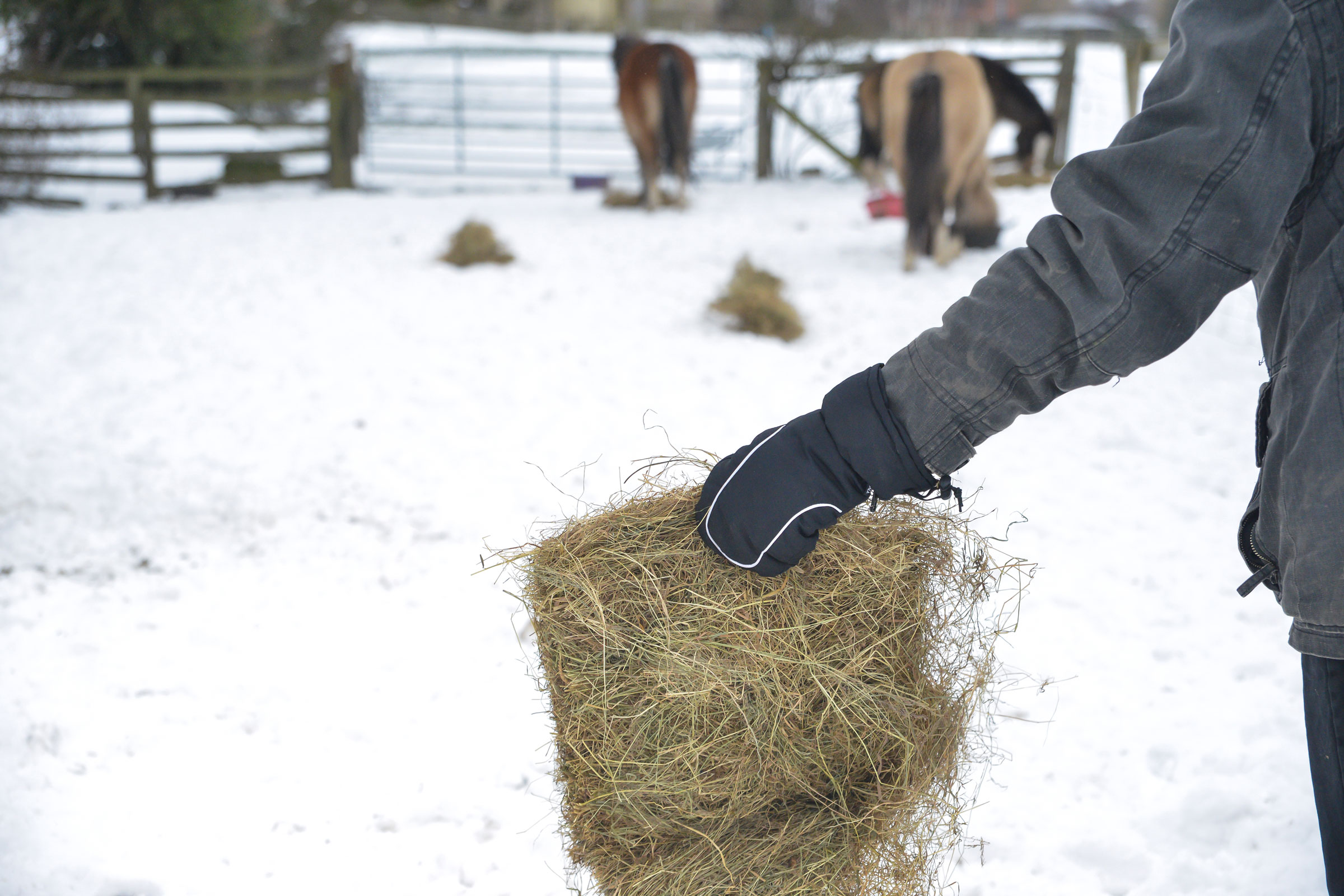
Finding the right pair of winter gloves might be the most difficult piece of winter gear for horse owners to choose. Snow mobilers and skiers have plenty of options for keeping their hands warm, but given the nature of their sport, bulkier hand gear is workable. Warm, but cumbersome gloves make it impossible to hold the reins or complete some chores. Heavier gloves are often bulky and interfere with dexterity. Thinner gloves allow for freedom of movement, but don’t offer enough insulation to keep fingers warm during chores or a lesson.
Here are three tips for buying gloves that keep your hands warm and provide the freedom to move your fingers.
Select waterproof gloves. Waterproof qualities might not be necessary for riding or schooling sessions, but it is important during outdoor chores. According to the Center for Disease Control, “water conducts heat away from the body 25 times faster than air.” Cotton knit gloves and other fabrics that soak through easily won’t cut it.
Choose gloves with grip. Gloves must be comfortable, but also offer sufficient grip, especially while riding and handling horses.
Try heated gloves. Heated winter gear is a popular option. Like jackets, vests and socks, there is a wide selection of heated gloves or disposable heated inserts for gloves that are readily available.
Think outside the box. Gloves designed for fly fishing can also double as suitable riding gloves. Fly fishing relies on sensitivity/feel/grip, which translates well into the horse industry.
Look for liners. Lightweight liners can add insulation without adding bulk. Silk is one fabric known for its insulating qualities. Some glove styles include built-in pockets to hold hand warmers so you don’t need to place them directly against your skin.
Keep fingers moving. Fingers and toes often get cold because they aren’t moving. Wiggling them encourages circulation and helps combat frigid temperatures.


